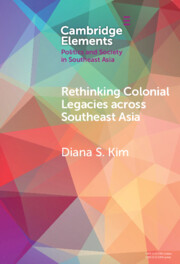Element contents
Rethinking Colonial Legacies across Southeast Asia
Published online by Cambridge University Press: 17 March 2025
Summary
- Type
- Element
- Information
- Online ISBN: 9781009070942Publisher: Cambridge University PressPrint publication: 17 April 2025

